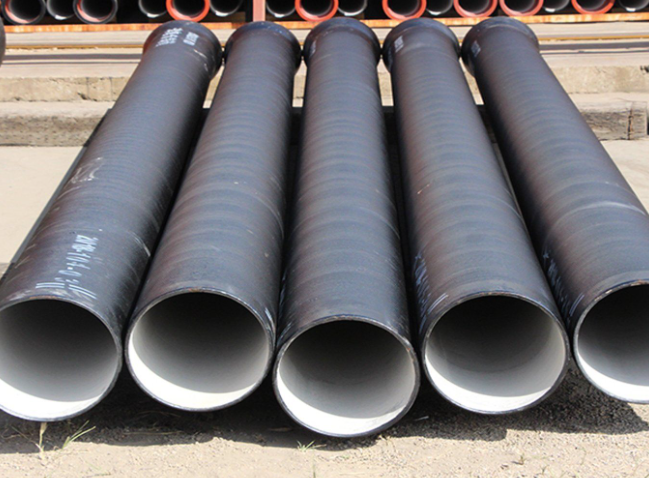Installing ductile iron pipes (DIP) is a crucial task for both residential and industrial water and sewage systems. Known for their strength, durability, and versatility, ductile iron pipes are a top choice for many construction and utility projects. However, the installation process can be complex if not done properly. This comprehensive guide will walk you through the installation steps, materials needed, and common mistakes to avoid.

Whether you’re a DIY enthusiast or a professional, our detailed instructions, table of materials, and frequently asked questions (FAQ) will help you install ductile iron pipes like a pro.
What is Ductile Iron Pipe?
Ductile iron pipes are made from a type of iron that is more flexible than traditional cast iron, which allows them to withstand higher pressure and external stress. These pipes are commonly used for transporting water, sewage, and other utilities. They are highly resistant to corrosion, making them ideal for underground installation.
Why Choose Ductile Iron Pipe?
-
Durability: Can last over 100 years with proper installation.
-
Corrosion Resistance: Resistant to both internal and external corrosion, particularly in aggressive soils.
-
Cost-Effective: Long-term savings due to reduced maintenance needs.
-
High Pressure Tolerance: Ideal for high-pressure applications like water distribution.
Step-by-Step Guide to Installing Ductile Iron Pipes
1. Plan and Prepare the Installation Site Before installation, ensure you have the following:
-
A clear layout plan.
-
Accurate measurements of the area where the pipes will be installed.
-
Necessary permits (if applicable).
2. Gather Materials and Tools Here’s a basic materials and tools list to get started:
| Material/Tool | Purpose |
|---|---|
| Ductile Iron Pipes | Main component |
| Pipe Couplings | To join pipes together |
| Gaskets | To prevent leaks |
| Pipe Lubricant | To ease pipe joining |
| Shovel or Trencher | For digging trenches |
| Pipe Wrench | To tighten connections |
| Level | For accurate pipe alignment |
| Tape Measure | For measuring pipe lengths |
| Safety Gear (Gloves, Goggles, etc.) | For personal protection |
3. Excavate the Trenches
-
Start by digging trenches where the pipes will be laid. The trench depth depends on your local building codes and the size of the pipes.
-
Ensure a smooth, even bottom to avoid damage to the pipes during installation.
-
For larger projects, use a trenching machine for speed and precision.
4. Install the First Pipe Section
-
Lay the first section of the ductile iron pipe into the trench, making sure it’s aligned properly.
-
Check the level of the pipe to ensure it has a slight slope if needed (usually 1/8 inch per foot for water pipes).
5. Join the Pipes
-
Use pipe couplings to join sections of pipe together.
-
Apply lubricant to the gasket before sliding the coupling over the pipe ends.
-
Ensure the gaskets are properly seated to prevent leaks.
6. Backfill the Trench
-
After joining the pipes, backfill the trench with soil, making sure not to damage the pipes in the process.
-
Use a compactor to firm up the soil around the pipes.
7. Test for Leaks Once the trench is filled, it’s time to test the installation. You can pressurize the system and check for any signs of leaks.
Best Practices for Installing Ductile Iron Pipes
-
Proper Alignment: Always ensure that pipes are aligned correctly to avoid strain.
-
Use Proper Jointing Techniques: Improper joints can lead to leaks or pipe failure. Follow manufacturer guidelines strictly.
-
Consider External Corrosion Protection: In corrosive environments, consider adding a corrosion-resistant coating or wrapping to the pipes.
-
Regular Inspections: Perform routine checks on your installation to ensure it remains in good working condition.
FAQ (Frequently Asked Questions)
Q1: What is the difference between ductile iron and cast iron pipes?
-
Ductile iron pipes are more flexible and resistant to cracking, while cast iron pipes are brittle and more prone to breakage.
Q2: How long do ductile iron pipes last?
-
With proper installation and maintenance, ductile iron pipes can last over 100 years.
Q3: Do I need special tools to install ductile iron pipes?
-
Yes, specific tools like pipe wrenches, couplings, and gaskets are necessary for a proper installation.
Q4: How do I prevent corrosion in ductile iron pipes?
-
Consider using protective coatings or cathodic protection if you’re installing pipes in corrosive environments.
Q5: Can ductile iron pipes be used for both water and sewage systems?
-
Yes, ductile iron pipes are suitable for both potable water and wastewater applications.
Conclusion
Installing ductile iron pipes might seem like a daunting task, but with the right tools, materials, and guidance, it’s manageable. By following this guide and implementing best practices, you can ensure a long-lasting, secure installation. Remember to always double-check your work and test for leaks before completing the project.
References:
- Ductile Iron Pipe – Wikipedia
- AWWA C150/A21.50: Installation Requirements for Ductile Iron Pipe Joints – American Water Works Association (AWWA)
- Ductile Iron Pipe Research Association (DIPRA) – Official Technical Resources
- Corrosion Protection of Ductile Iron Pipes – United States Environmental Protection Agency (EPA)
- Pipe Installation Safety Guidelines – Occupational Safety and Health Administration (OSHA)

